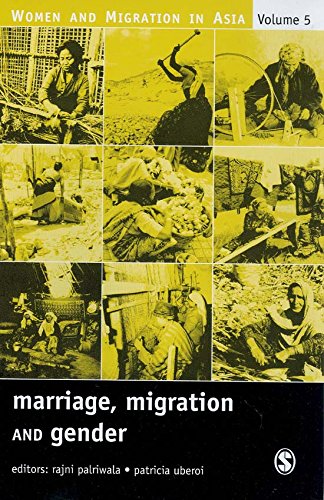Female migration is still largely due to marriage migration, though other forms of migration are gaining importance in recent times. Though marriage migration appears as a simple, linear phenomenon, of late the complexities of such movement have been a subject of concern in the discourses on migration. Accordingly, the phenomenon that was merely explained in terms of custom and kinship, is now increasingly being understood as one, which interacts and interrelates with market forces. The book under review which contains 13 articles on the complex dimensions of marriage migration, derives from a panel on the theme in the International Conference on Women and Migration in Asia, organized by the Developing Countries Research Centre (DCRC) of the University of Delhi in 2003. Though some of the articles included in the volume have already appeared in a special issue of the Indian Journal of Gender Studies, the present thematic compilation in a book form is a desired step to reach a wider spectrum of readers.
The socio-economic and political dimensions of marriage migration are often left out in the discussions on the subject. In spite of some intermittent discussions and acknowledgement of the certain positive impact that marriage migration has had on women, in terms of their social and economic mobility, there is a marked deficiency of scholarly research—especially in the context of Asian region. In the literature, migration is rarely construed as a means of female emancipation. Teresita C. del Rosario’s essay on ‘Bridal Diaspora’ deviates from the usual exploitation framework of transnational marriage migration. However, the liberation from close patriarchal supervisions (on account of distances from kin and community network) would also mean the absence of emotional and social support for the women, who face work and life in a socio-culturally alien environment.

